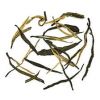-
Fast ShippingFree shipping for orders above $40
to most countries. -
Secure PaymentPay with Paypal, Credit Card …
-
Carefully SelectedFrequently Visit Tea Gardens.
Taste Repetitiously -
15 Days RefundNo Questions Asked
Refund Policy
Nonpareil Handmade Anxi Yun Xiang TieGuanYin Oolong Tea
Orchid & roasting fragrance, full-bodied taste
Orchid & roasting fragrance, full-bodied taste
| Origin: |
Houtian Village, Longjuan Township, Anxi County, Fujian Province, China |
|---|---|
| Season: |
Autumn Tea |
|
Harvest Date: |
October 16, 2017 |
| Dry Leaf: |
Hand-made, rolled into tight, even balls, dark brown in color, with a shape often compared to the head of a dragonfly |
| Aroma: |
Roasted aroma |
| Liquor: |
Orange color |
| Taste: |
smooth and full taste, with a rich roasting aroma and a slight sense of orchid flower. The sweet aftertaste and aroma lasts long in your mouth |
| Tea Bush: |
C. sinensis cv. Tieguanyin |
| Tea Garden: |
Nanqi Tea Garden |
| Caffeine: |
Moderate caffeine (less than 20% of a cup of coffee) |
| Storage: |
Store in airtight, opaque packaging; keep refrigerated |
| Shelf Life: |
24 Months |
Angel's Comment:
High quality roasted Tie Guan Yin.
Yun Xiang (韵香) means roasted. Roasting is the key process step for Yunxiang Tie Guan Yin’s feature: sweet and mellow flavor, very bright liquid. Usually, people who want to drink Tie Guan Yin will start with Qingxiang Tie Guan Yin, which is the base of Yunxiang tea. By roasting the Qingxiang tea, we can get the Yunxiang tea. Yunxiang tea has long-lasting aroma, but requires more skill and patience for the makers, especially hand-made tea. During the roasting process, the tea will be roasted for 3 or 4 times, for over 8 hours of each time. The maker must control the temperature carefully, and judge the tea’s quality with his experience. We may say that fine roasted oolong tea is made under a strict “fire” trial.
There are multiple types of Tie Guan Yin in China. It is traditionally divided into three types: Qingxiang, Yunxiang and Nongxiang (浓香). Qingxiang Tie Guan Yin is known as its high aroma and brisk flavor, also called as the GuanYinYun (观音韵). Giving some charcoal fire into the making of Qingxiang tea, it can be transferred into a different type – the Yunxiang Tie Guan Yin, which tastes mellow and full. It has heavy roasting flavor, long-lasting aroma, while keeps the smooth and sweet taste of Qingxiang tea. It is also called as charcoal roasted Tie Guan Yin. Hand-made charcoal roasted Tie Guan Yin takes much more efforts during making.
 |
Cup Method |
 |
Chinese Gongfu Method |
 |
Teacup: 12oz / 355ml |  |
Gaiwan: 3.8oz / 110ml |
 |
212℉ / 100℃ |  |
212℉ / 100℃ |
 |
5g Tea |  |
7.5g Tea |
 |
Brewing time: 5 - 8 mins |  |
7 steeps: rinse, 20s, 30s, 40s, 50s, 70s, 90s, 140s |
| Rinse time is around 5 seconds |
The Nanqi Tea Garden, situated at an elevation of between 800 and 1000 meters, is located in Houtian Village of Longjuan Township in Anxi, China. The climate here is warm and moist throughout the year with an average temperature between 16 and 19℃ and an annual rainfall of around 1800mm. Nanqi is a superstar tieguanyin growing region, with the tea planted here of excellent quality due to the ecologically unique natural environment.
Perhaps more significantly, the local people are hard workers who know very well how to make tea. Their traditional methods of processing give Nanqi tieguanyin its unique Guan Yin taste, aroma, and feel: sun-withering, spreading, fixation, rolling, forming, and roasting. The orchid aroma of Nanqi tieguanyin is starting to become known throughout the world.
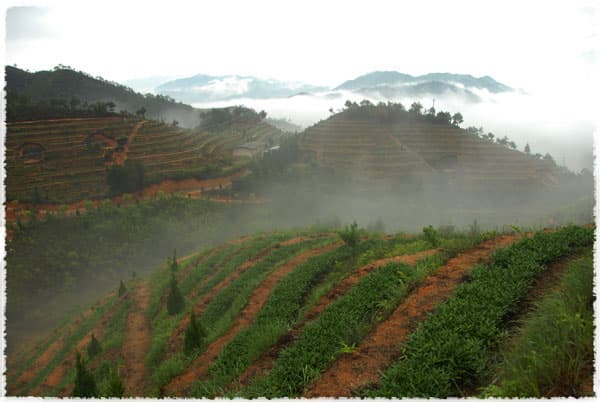
After tasting this hand-crafted tieguanyin, Angel Chen from TeaVivre interviewed the farmer, Ms. Chen Biyi, about the tea.
Angel: Where are the leaves for this tea from?
Ms Chen: Nearly every town in Anxi provides fresh tea leaves. The materials for this tea come from plantations mainly in the areas of Longjuan, Xianghua, Gande, Huqiu, and Xiping.
Angel: Usually when drinking tieguanyin, we may feel a slightly sour taste at the back of our tongue, along with the natural aroma of tieguanyin. Where do these qualities come from?
Ms Chen: This is due to a longer period of spontaneous fermentation before fixation. The sour flavor comes out naturally after the extended period of tossing and oxidation, often lasting for three days.
TeaVivre: A sour flavor might not show that tea has gone bad, or that it is of bad quality: sometimes the sourness is due to something called tuo suan (拖酸), or ‘drawing out the sourness’. Tea leaves are not pan-fired immediately after being picked; they may be put aside for two to three days, during which the leaves may oxidize and spontaneous ferment, which is what develops that sour flavor. This is part of the production method in preparation for ‘stir fixation’.
Angel: I didn’t taste a flavor like that when drinking this nonpareil tieguanyin. Is that a result of the instant stir fixation?
Ms Chen: You’re right. We call this kind of tieguanyin Zheng Chao - ‘zheng’ refers to the middle of the day while ‘chao’ refers to the process of stir fixation, ‘chao qing’, or frying the leaves to end the oxidation process and thus “fix” the current level of oxidation.
TeaVivre: Zheng Chao tieguanyin has a smooth liquid with a clear, heavy flavor, and a strong sweet orchid aroma. The local Fujian people name this characteristic of tieguanyin as “The Charm of Tieguanyin”, or Guan Yin or Yin Yun. It is a standard of discerning the quality of an Iron Goddess. Tea workers will decide whether the tea leaves are ready for stir fixation by their years of experience, and in this way, the flavor of one tieguanyin may vary due to the different experience of the tea makers.
The skill of roasting tea can be found in ancient China. In Ming Dynasty, the book Investigation into Tea(《茶笺》by Wen Long) wrote: The Classic of Tea does mention the procedure of “steaming and baking,” indicating a long history behind this procedure. In Dos and Don’ts in Tea Appreciation (Pin Cha Yao Lu)by Huang Ru, it is recorded: Once taken out from molds, the cakes should be on a big round shallow plate baked over fire to be heated thoroughly. The fire should be half smothered with charcoal, with a hollow inside to let go the heat.
Reference
Jiang Xin and Jiang Yi (2009) The Classic of Tea & The Sequel to The Classic of Tea, Hunan: Hunan People’s Publishing House, ISBN 978-7-5438-5994-4. P227, P242.
The tools using in roasting are simple. But the process is a hard work. A repeatedly check on every 15 to 20 minutes is needed, in order to control the temperature changing and tea leaf’s quality changing. Charcoal roasted Tie Guan Yin has unique aroma and profound taste. The charcoal roasting flavor is pleasant, and the aroma can last longer than Qingxiang tea.
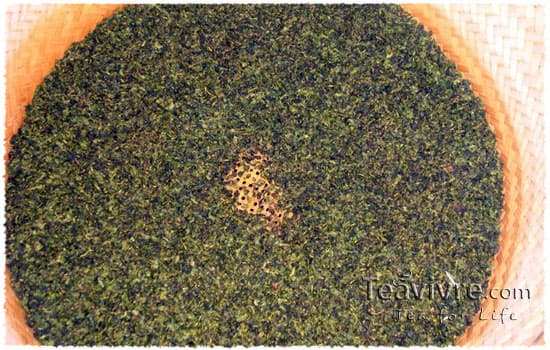
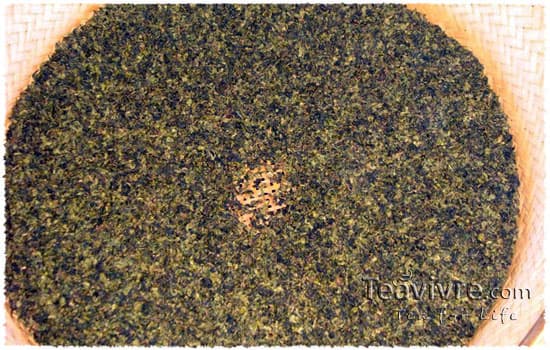
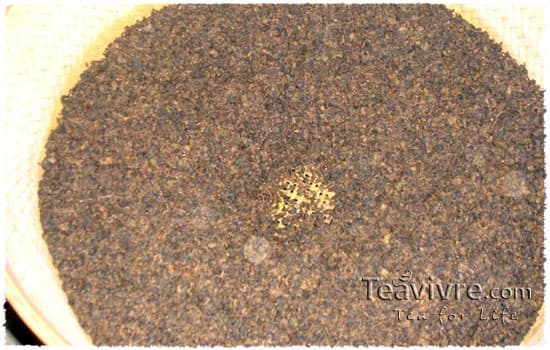
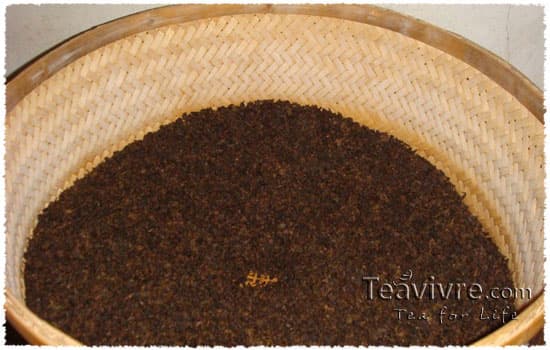
There is an important procedure during roasting: covering ashes. Roasting is to use high temperature to change the tea leaf’s nature. The leaf, however, cannot be directly contacted with hot charcoal at hundreds degrees. The charcoal must be covered with ashes, to slow down the burning speed and control the temperature between 50℃ to 60℃. Meanwhile, the maker must check the leaf’s condition repeatedly. There should be no open fire; otherwise all the previous efforts will be wasted.
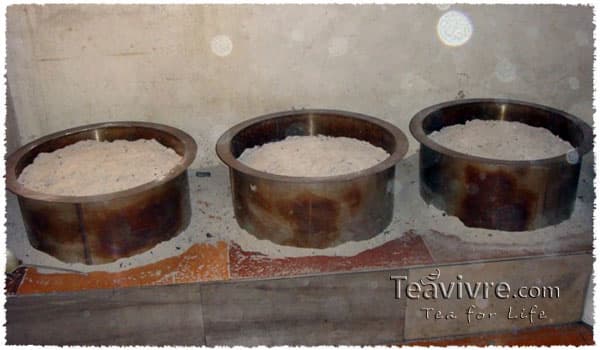
Anxi is in the southeast part of Fujian, with a total area of around 3000 square kilometers. The environment here is definitely suitable for growing tea trees, with an average temperature between 16 and 20℃ and an annual precipitation of 1600-1800mm. According to records in the Anxi County Annals, the tea production in this area began during the Tang Dynasty, then rose through the Ming and Qing Dynasties, and flourished in the last century - overall spanning a history of over a thousand years.
Anxi has been renowned as the capital of tea in Fujian, and in March 1995 was named the Home of Chinese Oolong by the Ministry of Agriculture.
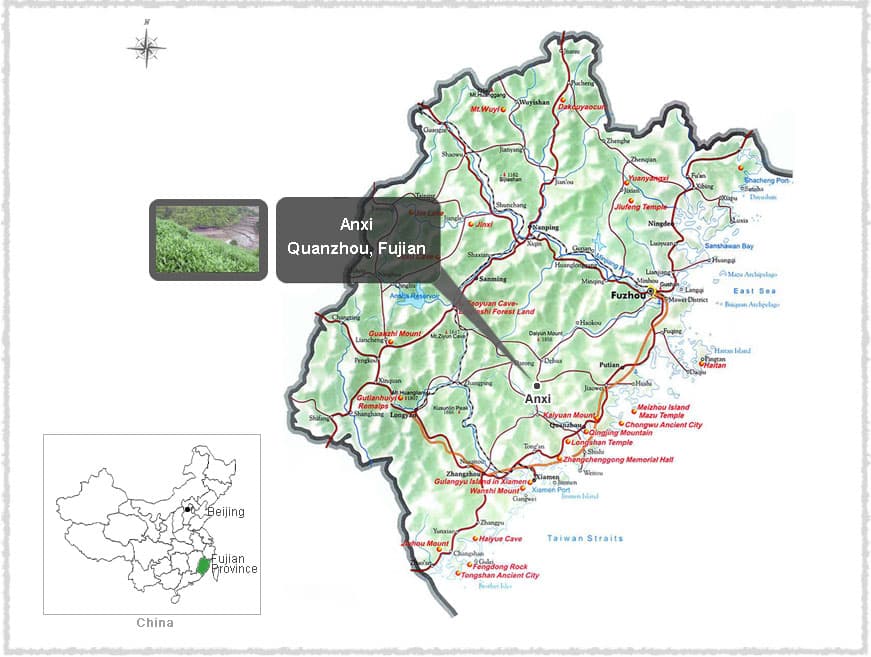
C. sinensis varietal Tieguanyin reproduces through sexual propagation, and takes the form of a shrub with a medium-sized, oval-shaped leaf, deep emerald-green in color. The left dent is thin while the leaf itself is thick yet fragile, and the buds often take on a rich purple-red color. This particular varietal has earned the descriptor “delicious but difficult to grow” since it can flourish only in fertile soil and under appropriate planting and cultivation methods.
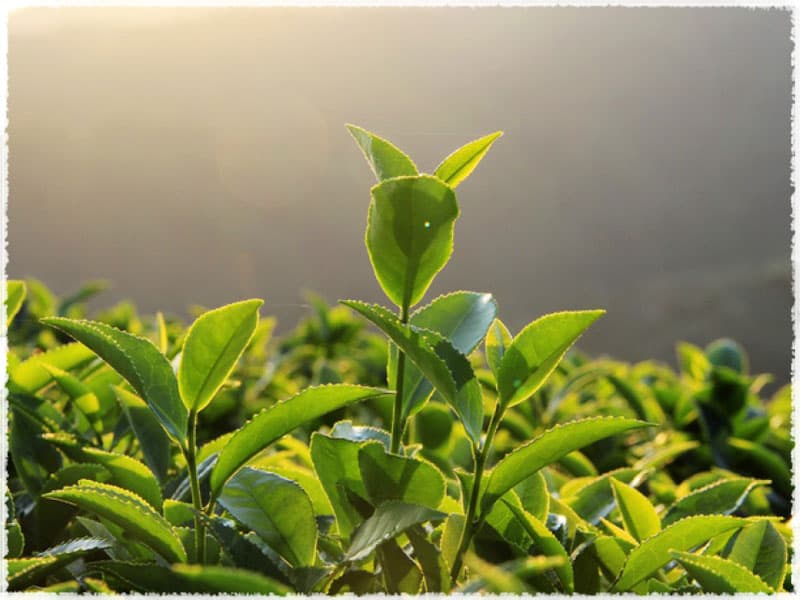
Tie Guan Yin is the representative of Chinese oolong tea. Oolong teas were first developed in the early 1700s in Fujian as a cross between nonfermented white and green teas, and fully fermented black teas, with the best of both in a single tea. Oolong quickly became popular throughout eastern China and Taiwan, and in the early 1970s spread to Japan and the rest of the world. Fujian, the home of oolong tea, still produces the finest.
-
5 stars13
-
4 stars2
-
3 stars2
-
2 stars0
-
1 star0



